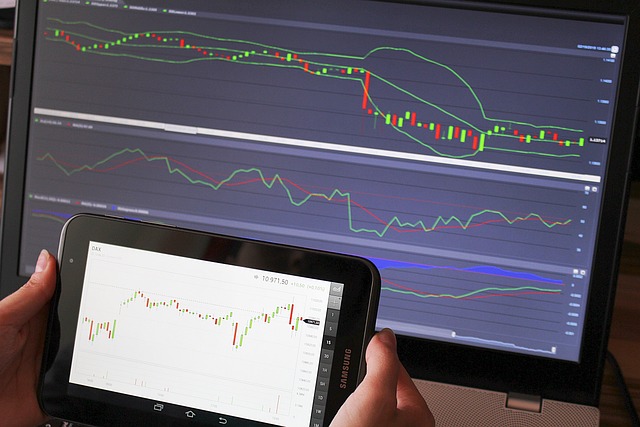Understanding Crypto Signals: A Comprehensive Guide
Author: Jameson Richman Expert
Published On: 2024-08-02
Prepared by Jameson Richman and our team of experts with over a decade of experience in cryptocurrency and digital asset analysis. Learn more about us.
In a world increasingly dominated by digital currencies, the term "crypto signals" has become a buzzword among traders and investors. But what exactly are these signals, and why are they crucial for anyone looking to navigate the volatile waters of cryptocurrency? This article delves deep into the intricacies of crypto signals, providing a thorough understanding of their significance, how to utilize them effectively, and the best practices for integrating them into your trading strategy.

What Are Crypto Signals?
Crypto signals are essentially actionable insights and analysis that indicate the best times to buy or sell particular cryptocurrencies. These signals are usually derived from various methodologies, including technical analysis, market sentiment, and fundamental analysis. Signals can be provided by expert traders, automated software, or a combination of both. Understanding these signals is crucial for traders looking to maximize their investments and minimize risks.
Sources of Crypto Signals
There are several sources from which crypto signals can be obtained:
- **Professional Traders**: Many experienced traders share their insights via social media platforms, forums, or dedicated trading groups. These signals typically come with explanations of the reasoning behind them, making them valuable learning tools for less experienced traders.
- **Automated Trading Bots**: With advancements in technology, many traders now rely on algorithms that analyze market conditions and generate signals automatically. These bots can effectively analyze vast amounts of data quickly, though they often lack the nuanced understanding that a human trader might provide.
- **Signal Services**: Some companies specialize in providing crypto trading signals for a fee. They typically employ expert analysts who monitor the market continuously and generate signals based on their findings.
Types of Crypto Signals
1. Buy Signals
A buy signal indicates that it is an opportune moment to purchase a specific cryptocurrency. This could be based on technical indicators suggesting an upward trend, fundamental news that positively affects the currency, or sentiment analysis that indicates a bullish outlook.
2. Sell Signals
Conversely, a sell signal suggests it’s time to divest from a cryptocurrency. This might result from analysis indicating potential losses or adverse news affecting market sentiment.
3. Hold Signals
Hold signals recommend maintaining your current position in a cryptocurrency. This is often advised when traders believe the token is at fair value or when forecasts predict negligible volatility in the short term.
How to Use Crypto Signals Effectively
Utilizing crypto signals effectively requires a balanced approach that combines strategic planning, thorough research, and continuous learning. Here are some tips to consider:
1. Verification of Signals
Before acting on a signal, it's crucial to verify it through further analysis. Cross-reference signals with your own research or insights from other notables in the cryptocurrency community. This practice safeguards against potential misinformation.
2. Risk Management
Utilize a risk management strategy that suits your risk tolerance and trading goals. Setting stop-loss orders can protect against significant downturns, allowing you to minimize losses while still taking advantage of potential opportunities.
3. Continuous Learning
The cryptocurrency market is perpetually evolving, hence the importance of continuous learning. Invest time in enhancing your technical analysis skills, gaining a deeper understanding of market fundamentals, and staying up-to-date with global events that could influence crypto prices.

The Role of Technical Analysis in Crypto Signals
Technical analysis plays a pivotal role in generating crypto signals. By reviewing historical price trends and patterns, traders can develop predictive models that forecast future price movements. I strongly believe that understanding these patterns is essential for traders, as it equips them with the tools to make informed decisions.
Common Technical Indicators
- **Moving Averages**: These indicators smooth out price action and can point to potential reversals in trend.
- **Relative Strength Index (RSI)**: RSI measures the speed and change of price movements and helps in identifying overbought or oversold conditions.
- **Bollinger Bands**: This tool reflects volatility and can help traders identify potential entry and exit points.
Fundamental Analysis and Market Sentiment
While technical analysis is imperative, fundamental analysis and gauging market sentiment are equally important in the world of crypto signals. Understanding the underlying technology, team, and the purpose of a cryptocurrency can provide insights that technical indicators alone might miss.
Staying Updated with News and Events
Blockchain technology is profoundly impacted by news events—be it regulatory changes, technological advancements, or market trends. Subscribing to reputable news outlets and following influencers on platforms like Twitter can provide timely information that complements your trading strategy. In my opinion, being proactive in your research is the key to leveraging the full potential of crypto signals.
The Pros and Cons of Following Crypto Signals
Pros
- **Expert Insights**: Easily access the knowledge and experience of expert traders.
- **Time-Saving**: Signals help traders who may not have the time to conduct thorough analysis themselves.
- **Better Decision-Making**: Well-informed signals can lead to improved trading outcomes.
Cons
- **Risk of Dependency**: Relying solely on signals can prevent traders from developing their analytical skills.
- **Quality Variation**: Not all signals are created equal; some may be based on flawed analysis.
- **Loss of Control**: Following signals too closely can lead to emotional trading and poor decision-making.

Conclusion: Making the Most of Crypto Signals
Crypto signals can be powerful tools in the trading arsenal of any cryptocurrency enthusiast. However, it's important to approach them with caution and a discerning eye. By combining signals with your own research, risk management strategies, and continuous education, you can not only enhance your trading success but also deepen your understanding of the crypto landscape.
Final Thoughts
The world of cryptocurrency trading can be exhilarating yet daunting. As someone who has experienced both the highs of profitable trades and the lows of market crashes, I would advocate for a balanced approach to trading based on a careful analysis of signals, ongoing education, and an understanding of the broader market context. Only then can one truly harness the potential of crypto signals in this dynamic environment.